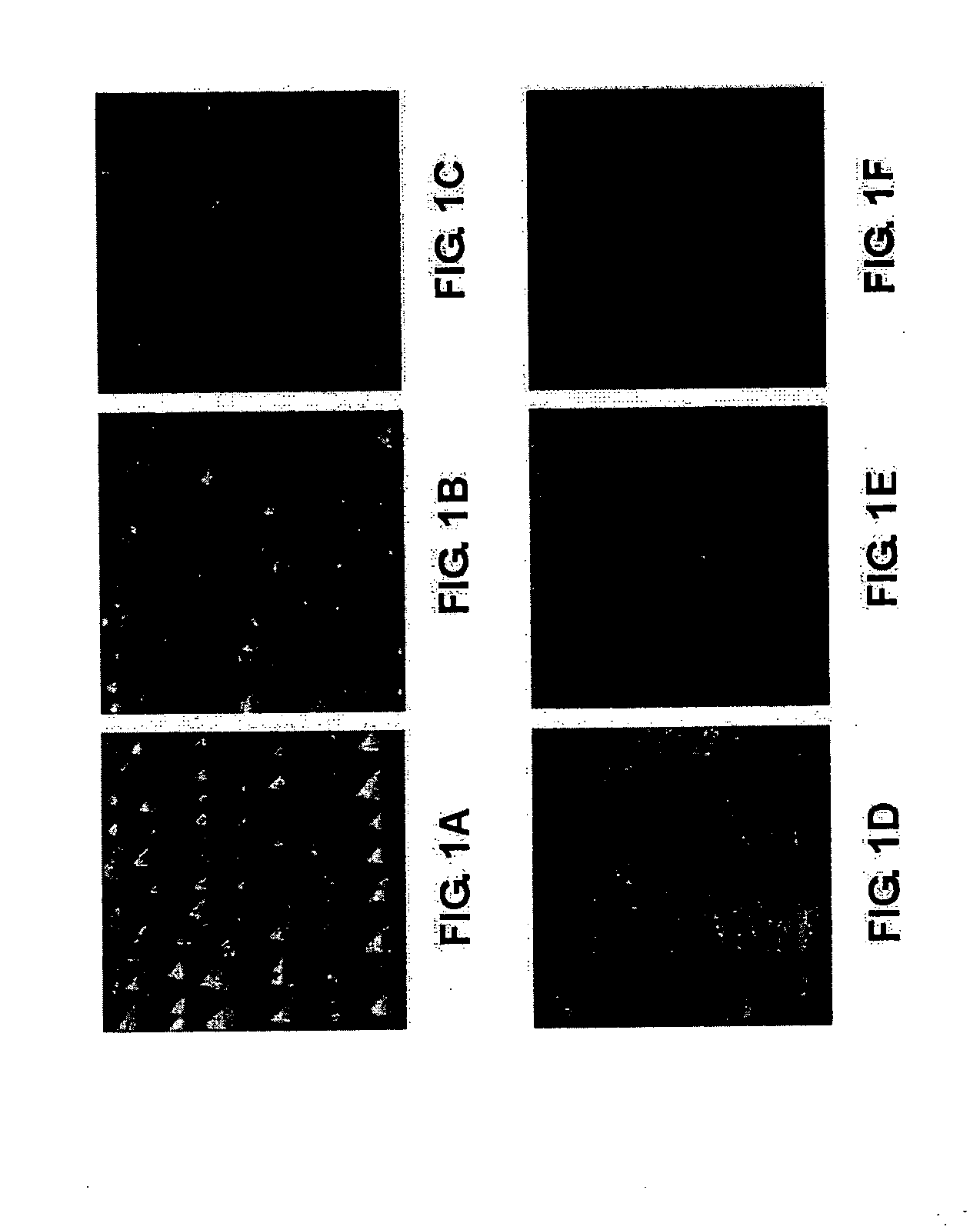Heteroepitaxial diamond and diamond nuclei precursors
a precursor and diamond technology, applied in the direction of crystal growth process, polycrystalline material growth, condensed vapor, etc., can solve the problem of little agreement on the physical mechanisms that underpin the process, and achieve the effect of enhancing electron emission
- Summary
- Abstract
- Description
- Claims
- Application Information
AI Technical Summary
Benefits of technology
Problems solved by technology
Method used
Image
Examples
example 1
[0072] Single crystal (11-20), or a-plane, sapphire substrates with dimensions 5.times.5.times.0.5 mm.sup.3 were used for epitaxial Ir deposition. The substrates were annealed in a tube furnace to prepare an atomically flat surface. The annealed substrates were then loaded into a UHV chamber, base pressure 10.sup.-10 Torr, via a load-lock and Ir deposition performed by electron-beam evaporation from Ir rods of 99.9% purity. The sapphire substrates were placed in the UHV chamber, heated to 900.degree. C. to 950.degree. C., and Ir deposited at a rate of 2.4 nm / min. The substrate heater was switched off immediately after evaporation and the film allowed to cool to room temperature. After removal from the chamber, the film orientation and crystalline quality were examined by X-ray diffraction (XRD) using CuK.sub..alpha. radiation, and the Gaussian full width at half maximum (FWHM) extracted by a least-squares fit. Film crystallinity and the epitaxial relationship were characterized by E...
example 2
[0082] Substrates and Ir Growth
[0083] All experiments were carried out on 5.times.5.times.0.5 mm.sup.3 substrates obtained from commercial sources. The (001) SrTiO.sub.3 plates were typically cleaned in buffered HF before insertion into a UHV electron-beam evaporator. After in situ annealing for 20 to 120 minutes at 800.degree. C., Ir was deposited at 2.4 nm / minute to a thickness of 150 or 300 nm. No post-deposition annealing was used as it tended to degrade the (001) epitaxial Ir. surface reactions of SrTiO.sub.3 with stainless steel substrate holders were observed. Reduction of the oxide, as evidenced by its darkening, led to a finite electrical conductance across the substrate. Similar behavior was noted for LaAlO.sub.3 but not for MgO.
[0084] Ir growth on polished (11-20) sapphire, or A-plane .alpha.-Al.sub.2O.sub.3 oriented approximately 1.degree. of the a-direction was explored. Substrate preparation consisted of annealing in air at 1450.degree. C. for 15 hr followed by a light...
example 3
[0097] Heteroepitaxial growth of Ir and Ir / diamond on STO (strontium titanate) and A-plane ALO (sapphire) are shown by FIGS. 5 to 23 as discussed above.
[0098] The growth of single crystalline diamond is by heteroepitaxy. Heteroepitaxy is the process of growing a monocrystalline thin or thick film material using as a template a substrate material with substantially the same lattice parameter (the spacing between atoms in the crystal). The process improvements and optimization resulting in diamond of higher crystalline quality, homogeneity, and size are in the following sequential steps:
[0099] 1. Preparation of atomically flat (stepped) lattice-matched single crystal substrates by chemical, physical, and thermal methods. The substrates have surfaces terminated in specified lattice planes. Substrates investigated include sapphire (Al.sub.2O.sub.3), strontium titanate (SrTiO.sub.3), lanthanum aluminate (LaAlO.sub.3), and magnesium oxide (MgO).
[0100] 2. Deposition of epitaxial iridium me...
PUM
 Login to View More
Login to View More Abstract
Description
Claims
Application Information
 Login to View More
Login to View More - R&D
- Intellectual Property
- Life Sciences
- Materials
- Tech Scout
- Unparalleled Data Quality
- Higher Quality Content
- 60% Fewer Hallucinations
Browse by: Latest US Patents, China's latest patents, Technical Efficacy Thesaurus, Application Domain, Technology Topic, Popular Technical Reports.
© 2025 PatSnap. All rights reserved.Legal|Privacy policy|Modern Slavery Act Transparency Statement|Sitemap|About US| Contact US: help@patsnap.com



